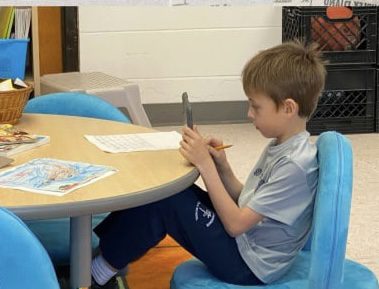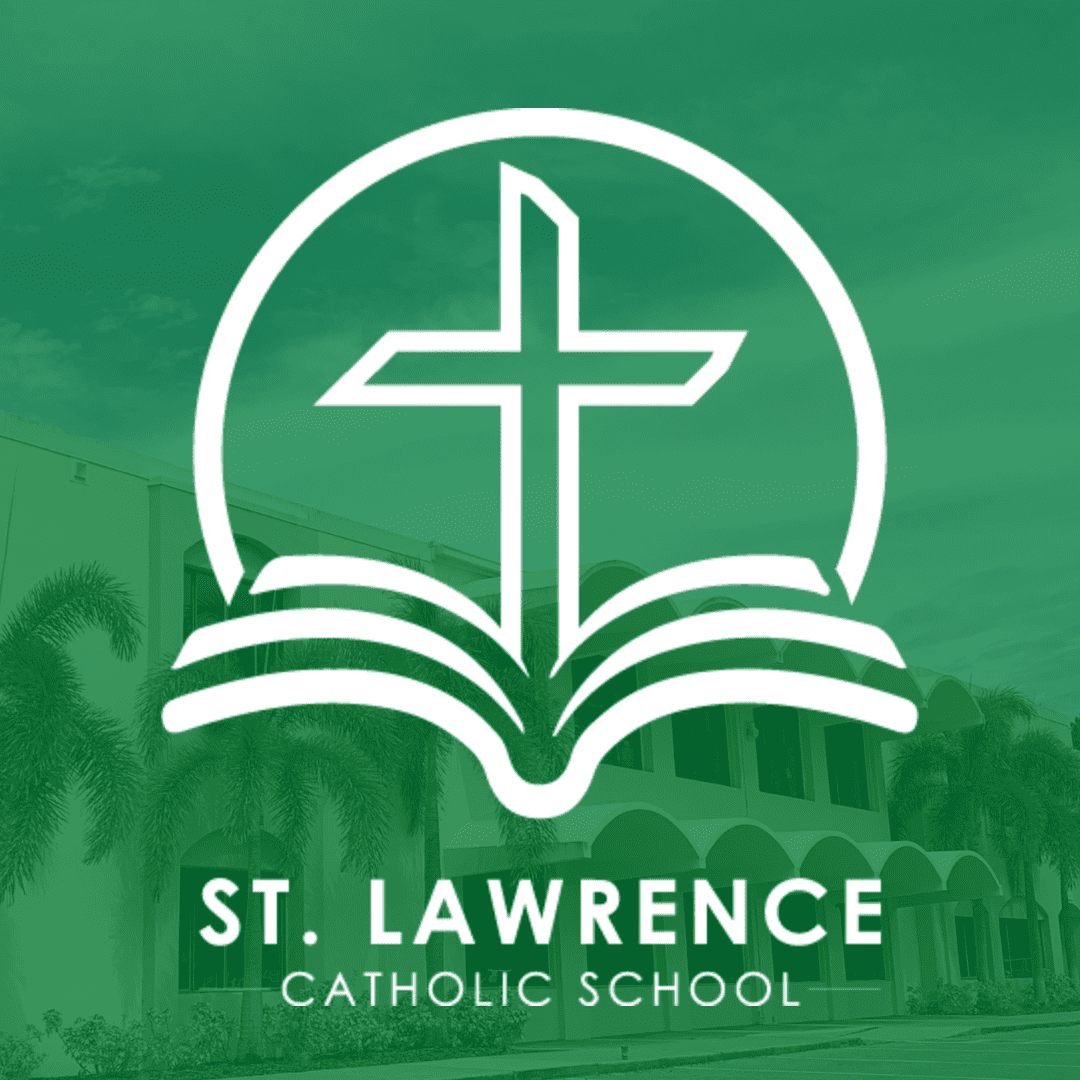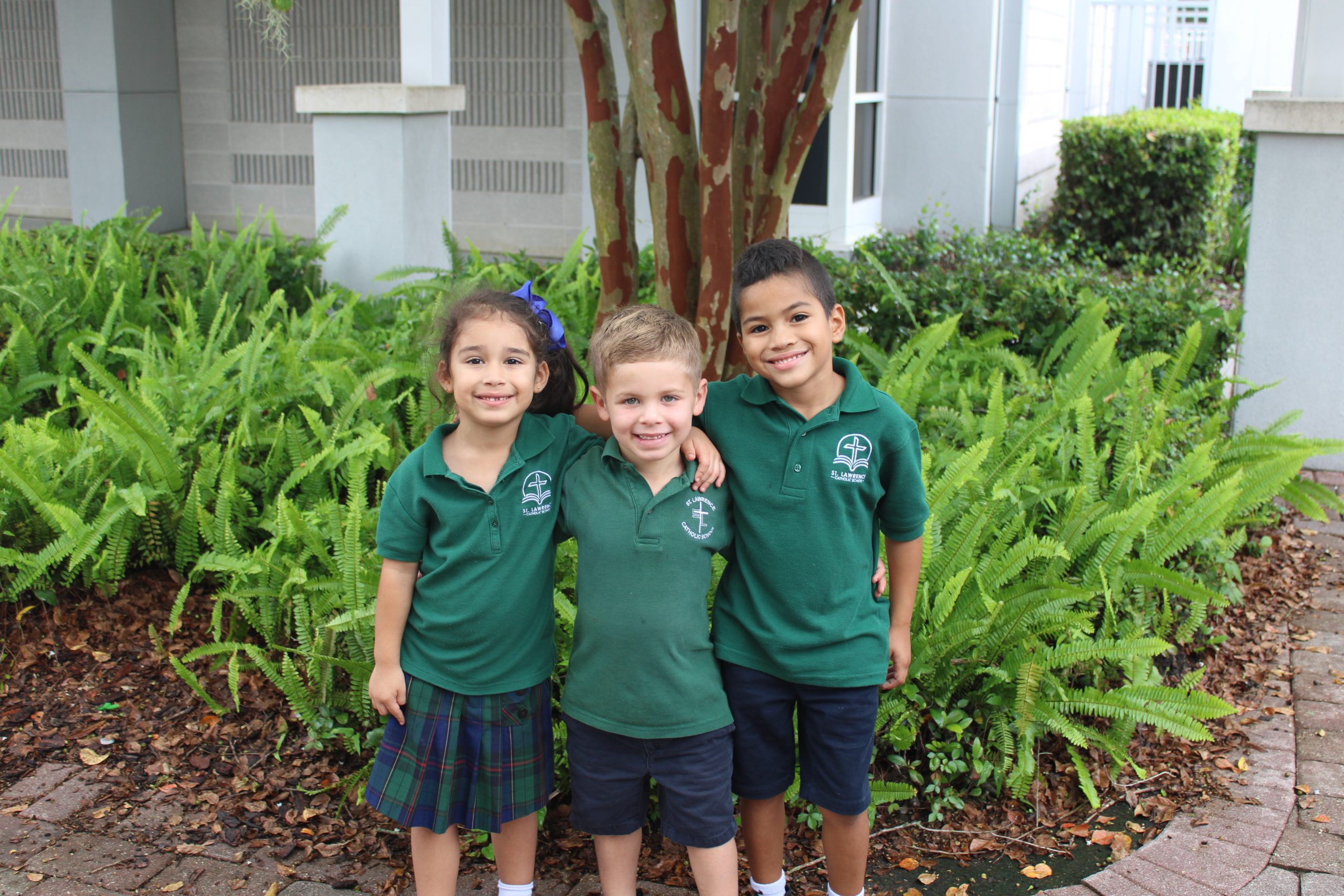Religion
Sadlier’s We Believe curriculum is used through daily religion classes in the primary grades. Children learn how God’s love is reflected in creation, life and the teachings of Jesus. Children celebrate the Church’s liturgical year and learn about the sacraments of Baptism, Reconciliation, and Eucharist. Children grow in their ability to work cooperatively by learning to show respect, kindness and compassion towards others. Children participate in weekly all school mass, chapel visits, rosary, Stations of the Cross, retreats during Advent and Lent, prayer buddies, monthly school wide service projects, class discipleship words and verses, and second graders prepare for their First Reconciliation and Holy Communion. Second graders complete a research project on a saint and dress like the saint for All Saints Day mass. Children share their faith in class, at home and in the Church as well as live their faith by caring for others as Jesus did.
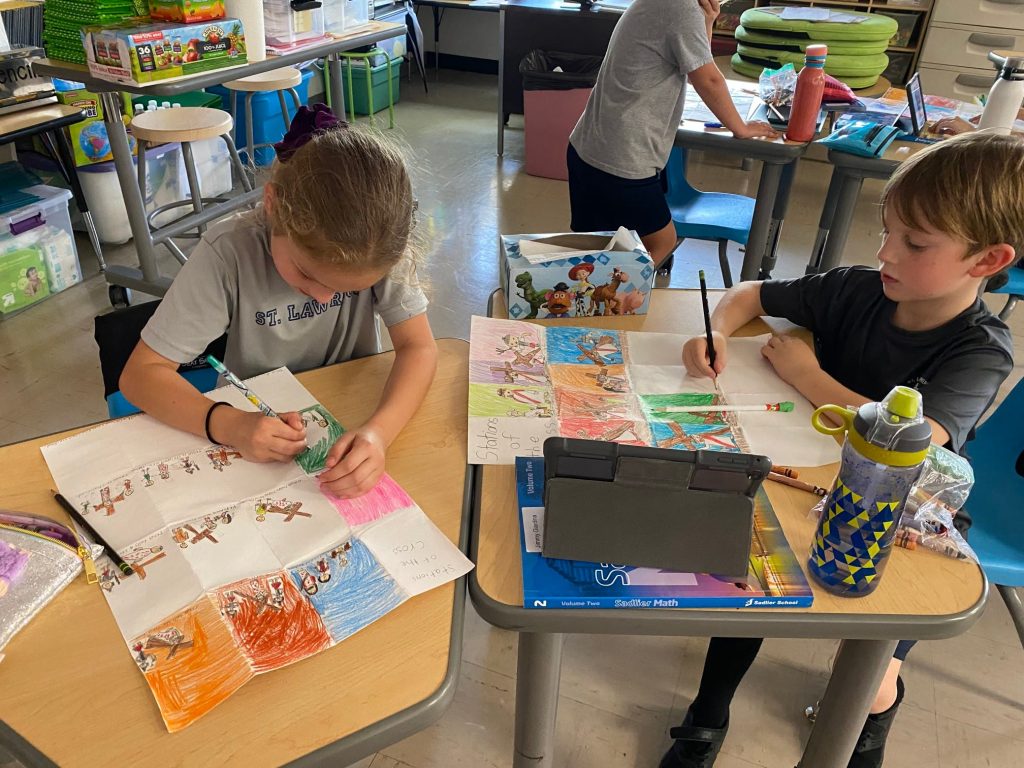
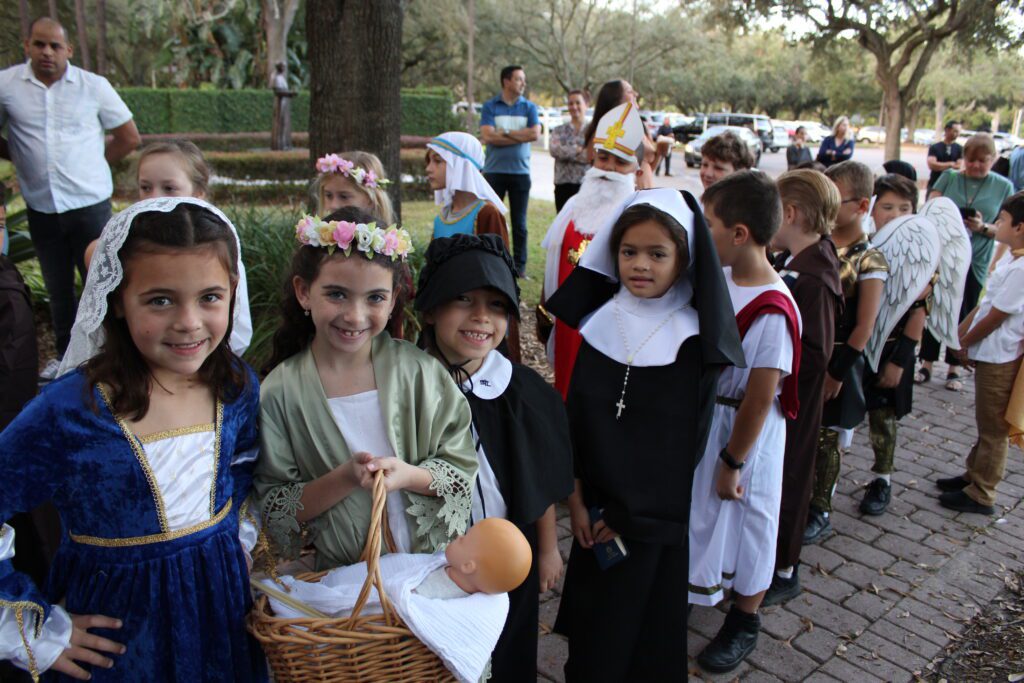
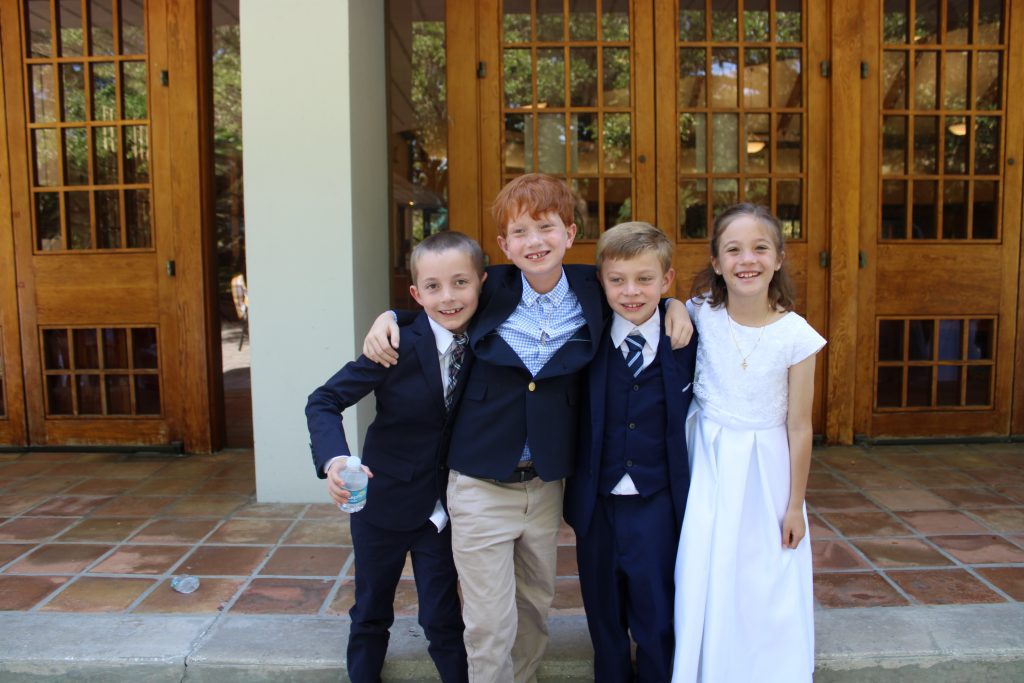
Science
At St. Lawrence, we help students develop an awareness of God’s creativity through studying science. Students engage in hands-on experiences to observe, explore, question, discover, and experiment with the curriculum. The curriculum is carefully aligned to Florida State Standards and various resources are used such as Scholastic News and Pearson Elevate Science. Hands-on experiences are the foundations of understanding key science concepts. In Kindergarten through 2ndgrade, our students are introduced to physical, earth, and life science concepts listed below:
- Sound
- Light
- Sky and Earth
- Weather and Seasons
- Living Things
- Parents and Offspring
As students progress through the primary grade levels, they delve deeper into each concept, increasing their skills year after year. This prepares them to expand their science knowledge by ensuring they have a good foundation in science education.
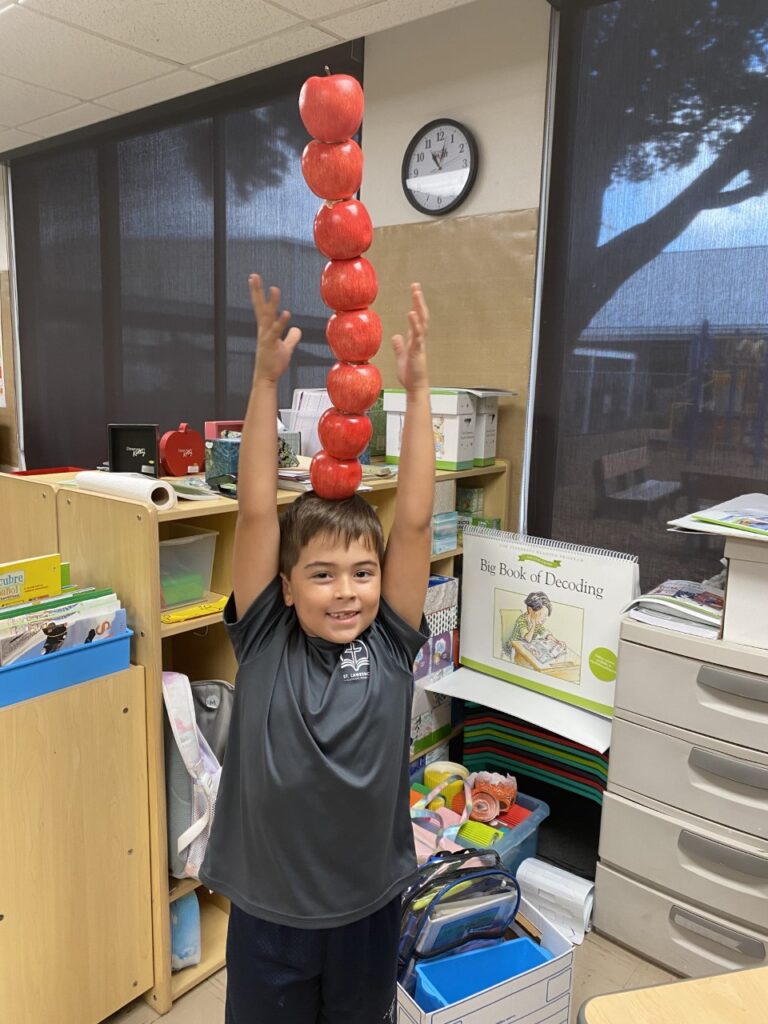

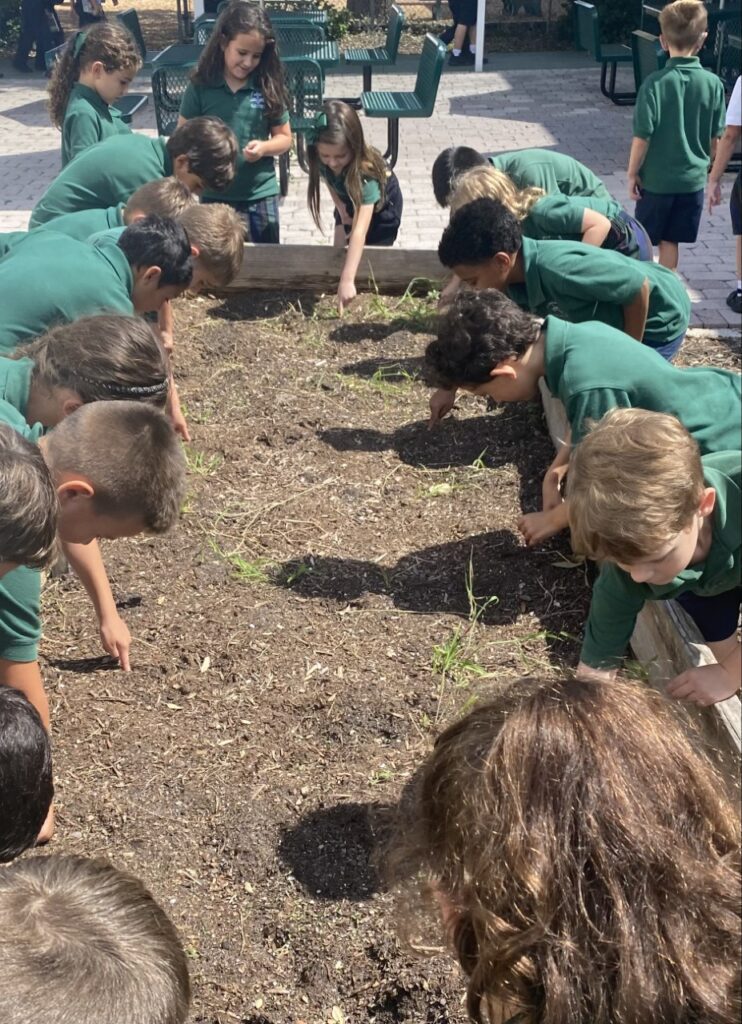
Social Studies
Studies Weekly is the Social Studies curriculum utilized in kindergarten through second grade. It’s a hands-on curriculum, which students love. Students can highlight, take notes, and complete learning strategies directly on the publication. Students love the colorful weekly newspapers or magazines as well. The students have a hard copy in addition to student access to an online platform.
The curriculum is designed to help students understand what is going on in the world through many different lenses. The curriculum and inquiry-based approach builds on student interests through the study of historical and current events, geography, economics, ethics, and traditions. By learning about many different historical figures through Studies Weekly, it helps the students to work on a large Wax Museum project. The Wax Museum is a project in which students choose a historical figure. It teaches the student to conduct research, write a report, create a poster, and present information in character. This project integrates social studies, reading, language arts, and public speaking.
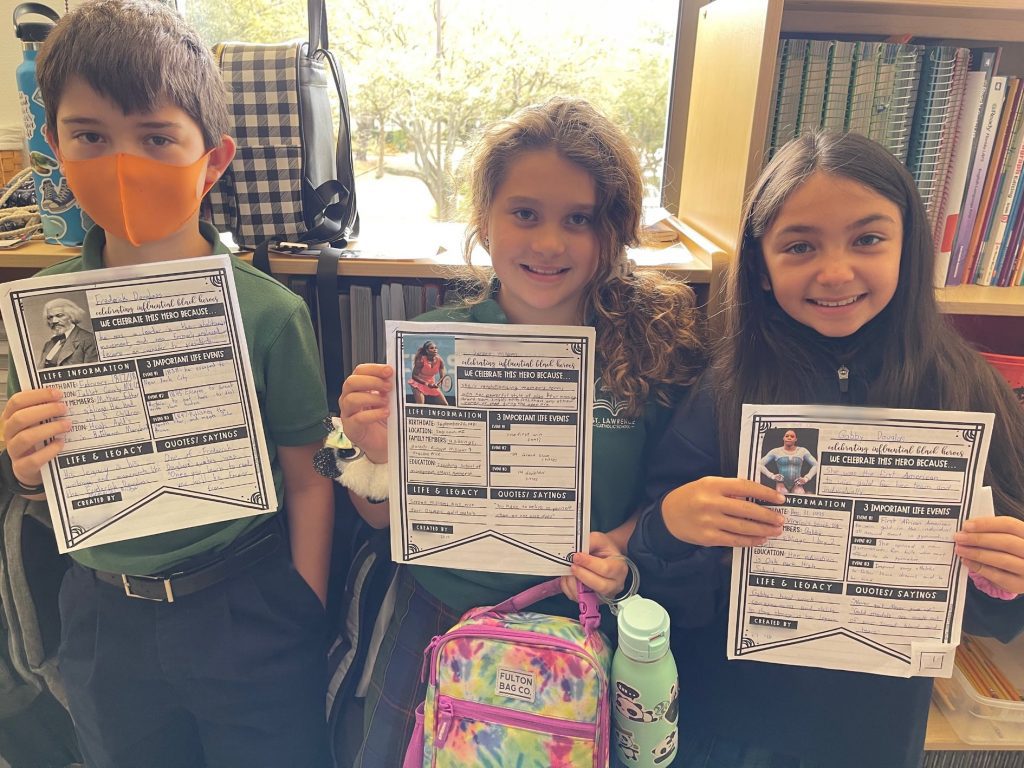
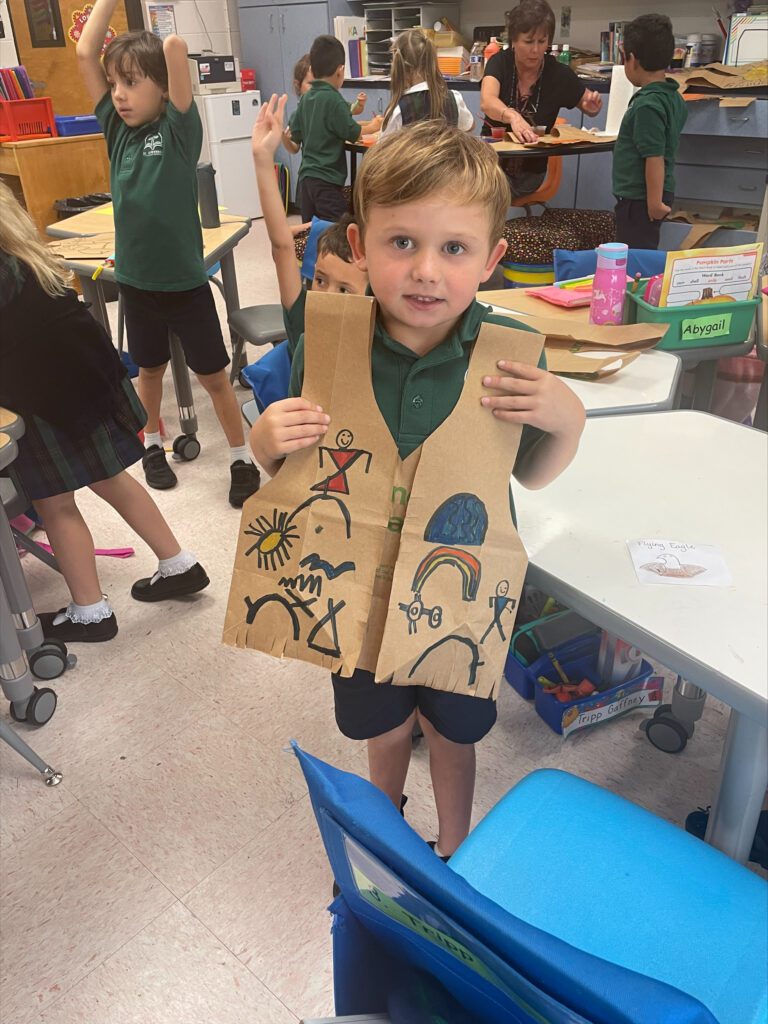
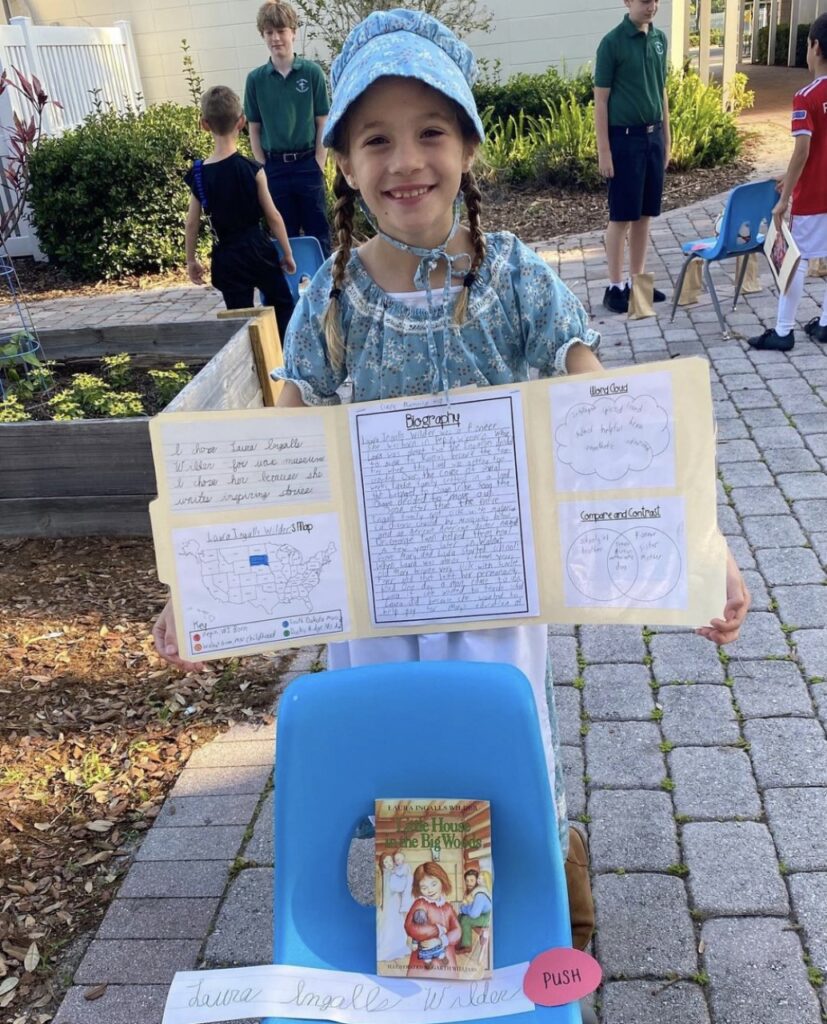
Math
Sadlier Math is the curriculum utilized in grades K-2. Starting in kindergarten, students learn to recognize, write, and count numbers to 100, while also learning to count by 2’s, 5’s, and 10’s. In addition, students develop a beginning awareness of putting numbers together with an introduction to addition and taking numbers apart with an introduction to subtraction problems. Students are also able to recognize coins, identify geometric shapes and fractions. A variety of manipulatives are used, as well as iPads. First graders focus on the development of thinking and reasoning skills. Students add, subtract, regroup, tell time, count money, estimate, and recognize fractions and geometric shapes. Second graders expand their knowledge of addition and subtraction skills by learning a variety of problem-solving strategies. Place value, time, measurement, and multiplication are all part of the second-grade math curriculum. Emphasis is placed on strengthening student computation and problem-solving skills, as well as developing fact fluency
